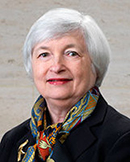

Research
BPEA | 2002 No. 2

2002, No. 2
THE CONVENTIONAL PARADIGM for the conduct of monetary policy calls
for the monetary authority to attain its objectives of a low and stable rate
of inflation and full employment by adjusting its short-term interest rate
instrument—in the United States, the federal funds rate—in response to
economic developments. In principle, when aggregate demand and
employment fall short of the economy’s natural levels of output and
employment, or when other deflationary concerns appear on the horizon,
the central bank should ease monetary policy by bringing real interest
rates below the economy’s natural rate of interest for some time. Conversely,
the central bank should respond to inflationary concerns by
adjusting interest rates upward so as to bring real interest rates above the natural rate. In this setting, the natural rate of unemployment is the unemployment
rate consistent with stable inflation; the natural rate of interest is
the real interest rate consistent with unemployment being at its natural
rate, and therefore with stable inflation.2 In carrying out this strategy in
practice, the policymaker would ideally have accurate, quantitative, contemporaneous
readings of the natural rate of interest and the natural rate
of unemployment. Under those circumstances, economic stabilization
policy would be relatively straightforward.